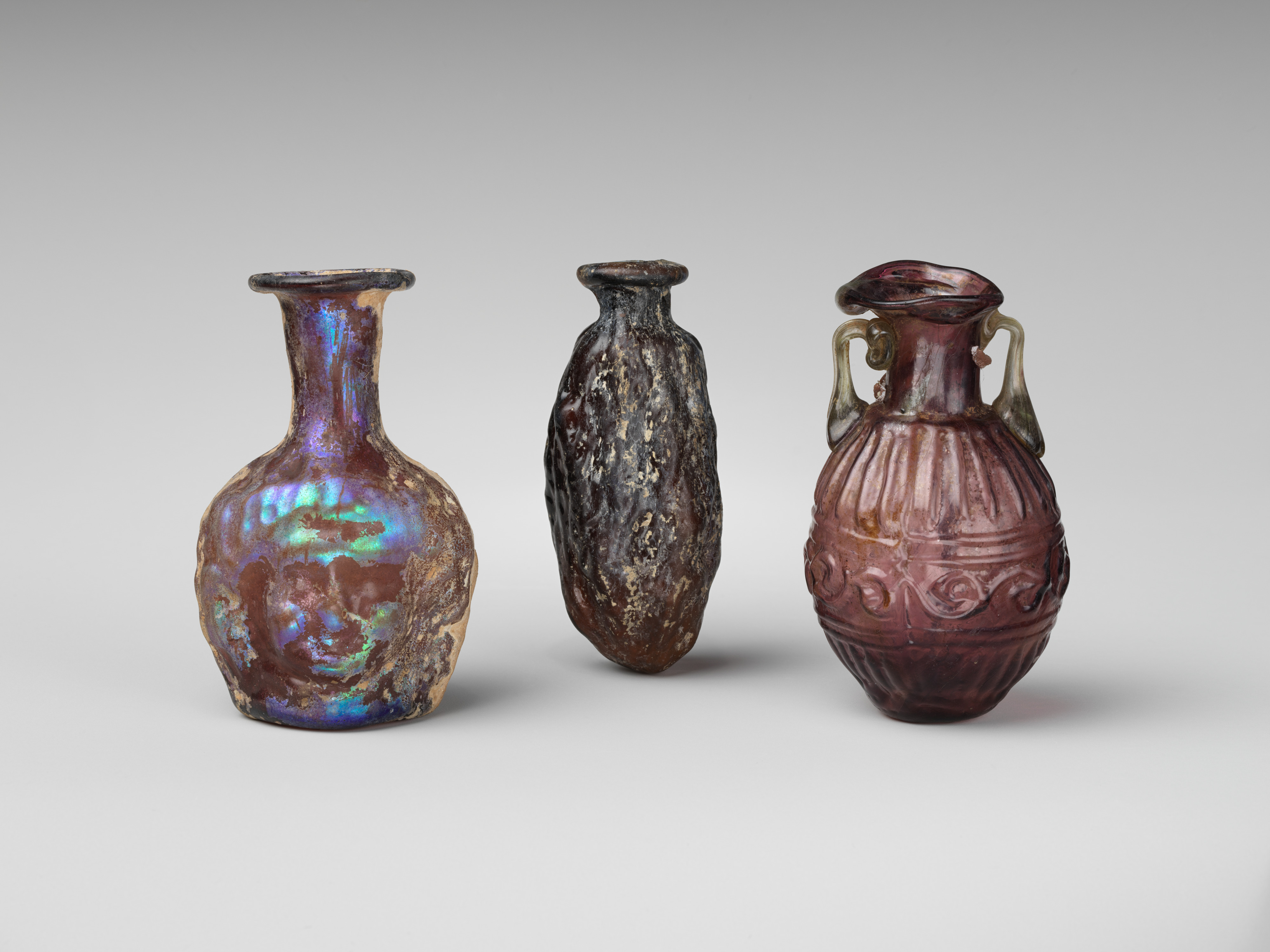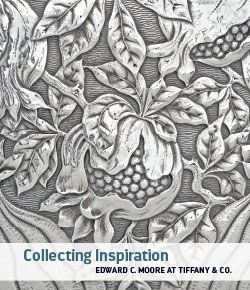Glass amphoriskos (perfume flask)
Mold-blown glass allowed for the creation of elaborate shapes and designs. Details were carved into a two-part mold, usually made of clay, so that they appeared in relief on the glass when the mold was removed. Handles were then added while the glass was still malleable. Imaginative forms, such as the head and date shapes here, and raised decoration emulating the embossed relief of silver vessels made them attractive alternatives to blown glass.
Due to rights restrictions, this image cannot be enlarged, viewed at full screen, or downloaded.
This artwork is meant to be viewed from right to left. Scroll left to view more.




